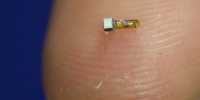One of the computer holy grails has long been eye tracking. Attempts to utilize the gaze to unlock a new form of input have plagued decades of consumer electronics, whether it’s due to accessibility problems, opening up new form factors, or simply attempting to put a unique twist on the ways we engage with our products. The concept behind Carnegie Melon University’s EyeMU (I believe “ICU” is too intense) is straightforward. These days, phones are huge. If you’ve ever tried to use a contemporary flagship with only one hand, you’re aware of the difficulties. If you’re lucky, you might be able to tap an icon with one hand while drinking coffee with the other.
While most prior attempts have failed, today’s phones contain a range of technologies that may be able to aid unlock this capability in a natural way. Years ago, I tried certain TV sets with eye tracking and experienced the same irritation as when trying to examine the 3D image on one of those Magic Eye posters. However, a combination of strong front-facing camera technology, Google’s Face Mesh, and the right algorithms might help respond to — and predict — user intent.
“Big software firms like Google and Apple have gotten fairly close with gaze prediction,” Associate Professor Chris Harrison says in a press statement. “But merely glancing at something doesn’t get you there.” “The true novelty in this research is the addition of a second modality, such as flicking the phone left or right, in combination with gaze prediction.” That is what makes it so effective. In retrospect, it seems so simple, yet it’s a brilliant idea that makes EyeMU a lot more intuitive.”
Another important factor to consider is not attempting to do everything with your eyes alone. Although more traditional input is necessary, the movie demonstrates how researchers may get a lot done by combining gaze and gestures. Use a photo-editing app. When you look at an image, it is selected. Zooming in and applying filters are accomplished by bringing the phone closer to the face. The most intriguing aspect of this is how much of it can be done with existing technology to augment touch and voice input.













